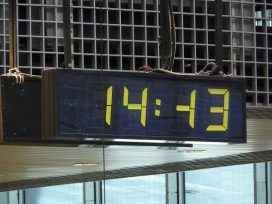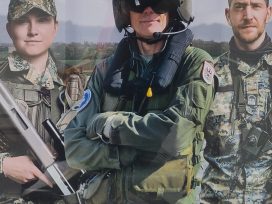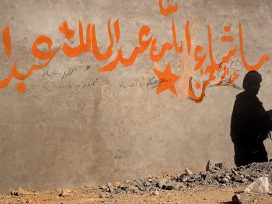Strategies of unimaginable crime
While Zelensky calls for Ukrainian civilians to flee eastern Donetsk, under ongoing attack from Russia’s military, Putin maintains that his forces are liberating the region. Propaganda that turns conflict into salvation denies the evidence of war crimes on frontlines. But what lies behind this denial? And how can it be overcome?
‘Hi, mum, it’s your son, I’ve been taken prisoner in Ukraine.’
‘Hang up, young man. The TV said I have a daughter.’
The above gag may seem extreme, but it reflects a genuine situation: Russian ‘zombification’ and ‘brainwashing’ has intensified since the war in Ukraine escalated. Those Russians who only follow official media channels might not realize the scale of destruction and loss of life in Ukraine. However, this does not relieve them of responsibility. Following discourse on ‘retribution’ and ‘revenge’ creates an atmosphere receptive to propaganda about Ukrainian ‘Nazis’, ‘Russophobes’ and ‘fake news about the Russian army’, legitimizing the Kremlin’s war.
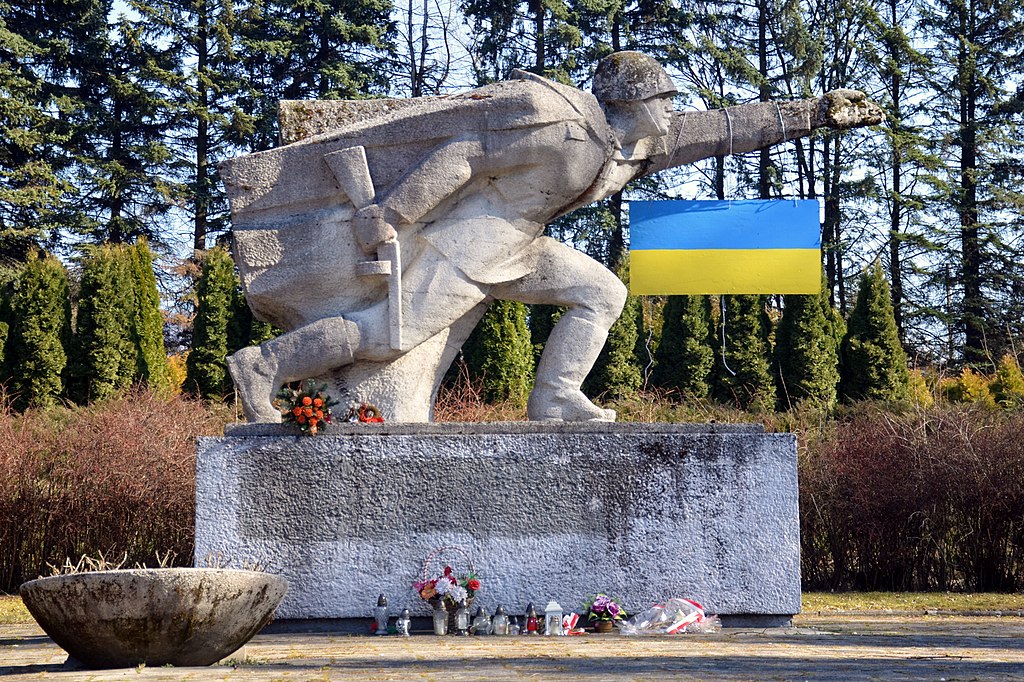
Ukrainian flag on memorial celebrating Soviet Russian Army in Second World War. Image via Wikimedia Commons
Pride lies behind the Russian idea of retribution and revenge. It has falsely enabled the right to judge how – on a universal scale – ‘things would be better’ and justifies any sacrifice (one’s own or, more significantly, that of others) on the way to achieving this goal. (I wrote these words and then realized how far they are removed from the fumes my country breathes because of this false pride.)
Rhetorical devices of war
Putin wrote an article last July in which he legitimized Russia’s right to Ukraine. He repeated its rhetoric in a speech he gave on 21 February 2022, reinforcing pseudo phraseology. His image of a single people settled across a huge territory as far back as the nineth century overwrites the diversity of actors in historical events. From this point on, ‘the people’ – so the speech goes – have suffered when something has been taken from them and rejoiced when something has been miraculously ‘restored’ to them. Today’s restoration of Ukraine, it is inferred, should be thought of as similarly ‘miraculous’.
Roots of denial
Evidence for crimes is easy to find but ignored. We are facing a situation analogous to Holocaust denial. And much lurks behind this ‘denial’.
Resentment towards Ukraine has been brewing for a long time. Over the past eight years, the plight of Donbas inhabitants has provoked outrage amongst those Russians who see any attempt by Ukraine to recover its territory as insurgency. Putin’s propaganda machine has totally concealed Russia’s role in the creation of the self-declared Donetsk and Lugansk People’s Republics. Any suggestion that these attempts to recover the territories, which have incurred loss of life, was caused by the illegitimacy of the separatist republic movement is suppressed.
However, nobody expected an assault on the whole of Ukraine. The force of aggression, otherwise labelled as ‘punishment’ for wrongdoing, should have caused a reaction even among those who bought the propaganda narrative and bragged about imminent ‘retribution’. But this did not happen. The reaction was not one of general condemnation.
The unimaginability of the crime
A mechanism came into play similar to that experienced during the Holocaust: the unimaginability of the crime. Sometimes a crime is so heinous it goes beyond the bounds of the ‘believable’. In other words, ‘this cannot be, because it simply can never be’. The behaviour of a country which talks about peace and liberation cannot itself be fascist, can it? Russian soldiers whose task was declared to be the ‘demilitarization’ of Ukraine cannot direct their overwhelming might towards senseless destruction and the annihilation of peaceful civilians, can they? With this strategy the Russian military has become complicit in Putin’s crime post-factum. Prisoners of war are saying they saw themselves doing things beyond the duty to protect their country that they knew they ‘cannot do’ – attacking another country’s civilian population.
Putin has confronted both the military and the civilian population with a sadistic question: what are you going to do when a huge, seemingly unbelievable crime is already being perpetrated, either in your name or by your hands? We already know how the majority of civilians have answered: deny the crime exists. As virtual accomplices, they cannot imagine themselves as complicit. And the denial is worse for the military. They commit a crime the moment they cross the border. Some surrender. The majority, in desperation, ‘go to the bitter end’. They have been infected with a crime. This is truly a plague.
Most Russians are unprepared for these moral dilemmas. A healthy reaction would have been to acknowledge the unpalatable truth that the ‘impossible’ was taking place, and make a public declaration that they will not sign off on the legitimacy of what is being done, that they will not approve their government doing this in their name. Instead, in the majority of cases the direct opposite has happened: namely, a readiness to believe the fantasies and lies, accept the state’s justification for war, and sign off on it, support it and spread the word. If they did not, they would immediately be confronted with a sense of shame and responsibility.
Instead, Russians are participating en masse in a general ‘swamp’ that begins with the information from official sources and ends with the family. They are accusing relatives or friends in Ukraine of spreading ‘propaganda’. Meanwhile, those on the frontlines have become witnesses to how Russian propaganda works. Russian authorities never fail to stage events even in the heat of war, sending busloads of ‘extras’ into occupied towns and villages to enact scenes of ‘local inhabitants greeting their liberators’.
Deflecting attacks with humour
On 1 March leading Russian channel Tsargrad TV showed a two-minute-forty-second-long cartoon about why Russia attacked Ukraine. It tells the story of Vanya and Kolya, two little boys who play together in a sandpit and sit at the same desk in school until Kolya decides to move to a different class and call himself Mykola. There he meets another boy wearing a T-shirt depicting an American flag who starts whispering to him. When Mykola starts wielding a stick and being rude to his former classmates, Vanya tells him off several times. The action comes to a climax when Vanya’s face fills the screen and the fairy tale-like female narrator says, ‘Finally, Vanya’s patience came to an end.’ Little Vanya then grabs Mykola’s stick with his bare hands and all the others start yelling at him.
The same story is then repeated with basic ‘historical realities’: we see a map showing the Donetsk and Lugansk People’s Republics forming out of their respective regions under continuous bombardment from the Ukrainians. Russia (Vanya) warns them, but nobody listens. Then, when Russia decides to demilitarize Ukraine, everyone starts shouting, the subtext being, ‘it really is true, children, Russia is good and still prepared to solve things peacefully’. Then a question flashes on screen, ‘So why were you silent during those eight years when Ukraine was bombarding Donetsk and Lugansk?’ Naturally, no child, nor teenager, could answer that, but the absurd move reveals the true addressee of this primitive message: the Russian citizen, targeted by the Daddy-state as the infantile recipient of its propaganda.
The question about the ‘eight years’ emerged almost spontaneously when war escalated but, since the cartoon, this period has found its place as one of the Russian propaganda narrative’s salient points: even children must leverage their parents on this point, insisting that if their justified feelings had somehow been muzzled, now was the ‘moment of truth’ and the time for ‘righteous anger’.
Owners of YouTube channels like to repost this video, which has opened up space for sarcastic comment. However, not many express outrage that children are among the targets of propaganda in Russia. Instead, most responses are creative remakes, turning the starry-eyed video into a horror clip, using slipshod technology to metamorphize noble-hearted Vanya into a monster.
Ukrainian humour also strikes right at the heart of the pro-Kremlin narrative’s pretence at coherence and rationality. When a Russian warship was filmed bearing down on the Ukrainian garrison on Snake Island, and a Russian officer said ‘I am a Russian warship’ before explaining in tedious detail why the Ukrainians had no other choice but to surrender, the now famous reply was simple: ‘Russian warship, go fuck yourself’. The Ukrainian did not have to learn what to say. He spoke without an accent, using a language common to both him and the aggressor. The Russian, who appeared oblivious of the fact they are in fact kin, concealed the insanity of the situation by parroting official jargon. The Ukrainian casually told him where to get off as if he was one of the family.
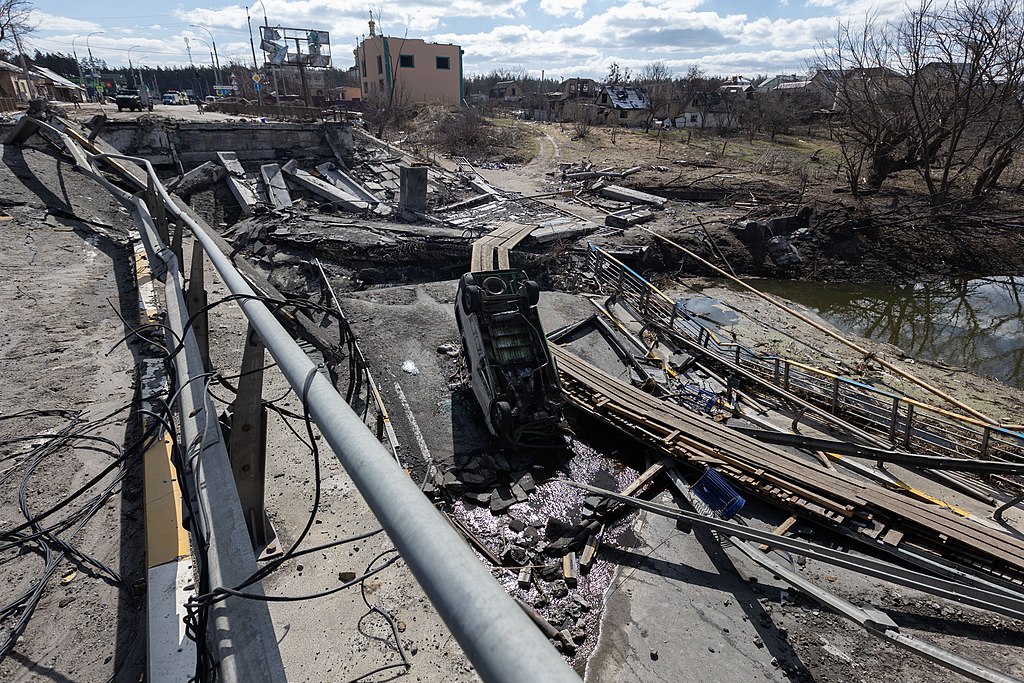
Outskirts of Kyiv after Russian invasion, 2022. Image via Wikimedia Commons
Ukrainians understand very well how the rhetoric of Putin’s ‘war of liberation’ works, winding it up to the limits of absurdity. That such humour can flourish is, of course, a moral victory. However, even if Ukrainians use jokes and wit to deflect attacks, the severity of war shouldn’t be played down. Instances of ideological blackmail and violence, and psychological terror must be included in any future ‘charge sheet’ alongside massive physical destruction.
No joke
Humour is meanwhile completely lacking in the sinister, cynical and macabre play of the imagination that stands behind the enormous ‘swamp’. Putin has swamped Russians with reasons why the ‘Ukrainian question’ must be resolved, here and now, both in his undigestible article of July 2021 and his hour-long speech on 21 February. Besides the best-known reason – helping those who identify as Russian – everything is in there: from the idea of restoring Russia to the Ancient Russian State (Putin uses capitals, pushing the idea that such a state existed, called itself such, had strictly defined borders, a single state language, etc.) to the problems of contemporary Ukraine and, naturally, its ties to the Russian Federation’s enemies (NATO and the West as a whole).
Nevertheless, there is increasing evidence that the commander-in-chief, despite all his ‘preparation of the ground’, did not brief the military. Some were only told about the ‘special operation in Ukraine’ and its targets at the last minute, while others did not find out they were not on manoeuvres but fighting a war until they were in another country. Research will be needed to establish what percentage of servicemen, including teenage conscripts, were the objects of the commander-in-chief’s ‘cruel joke’. When they crossed the border, they saw people who spoke the same language, had a similar way of life, lived in the same kind of housing but were told they were already in a different reality. Here people, who, back on the other side, they would normally protect, were their enemy, whose resistance they had to break to get at the supposed ‘fascists’. I am convinced that this mental collapse, this inevitable ‘crossing of the boundary’, this injection of an infectious insanity, was also part of the plan. I know the postmodernist consciousness of the ‘Kremlin dreamers’. I have no doubt the ‘not-quite-reality’ of what was happening was not a side-effect – it was a means of laying the groundwork for crime.
Simulacrums of state
Watching events unfold in Ukraine you want to cry out: ‘This is the Holocaust live!’ Everything is on view, reported live. Victims send documentary evidence. Events are described over normal channels of communication. Simultaneously, we see the ‘denial machine’ at work, the product of a twisted imagination which uses models that have been studied by historians and perfected by masters of the art. The machine plays with war elements like chess pieces, manipulating them into a parody of history, into an ‘alternative history’.
In this sense, Russian soldiers in Ukraine are in an ‘alternative Russia’. Everything looks like it does in ‘Russia-1’ (especially since it’s the same country, as postulated by Putin) but is considered fake, a simulacrum, and must be destroyed. In this paradigm, the Russian troops in Ukraine, along with their supporters in Russia, are players in a terrifying game where some fantastic evil emerges out of your everyday world. You cannot trust even your closest friends or family, because they may be possessed by an Evil invisible to the human eye. In other words, you imagine that your fellow Slavs in ‘deformed Russia’, in ‘Russia-2’ (as Putin sees it), are genuine fascists. In the meantime, you only appear to be doing things which were done by ‘fascists in the movies’ (leaving the same images of destruction, mangled corpses and terrorized civilians in your wake).
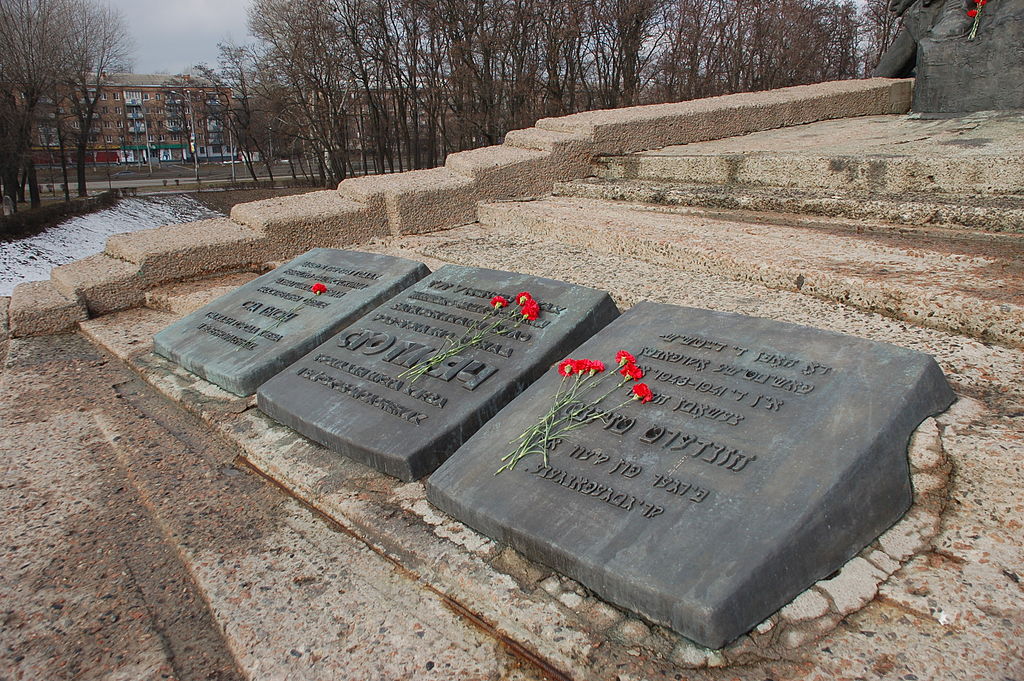
Babi Yar Monument, Kyiv. Image via Wikimedia Commons
Putin and his ‘grey cardinals’ play with the image of past wars, especially the Second World War, with a postmodernist sleight of hand. They cynically flaunt their independence from the customary field of references, wilfully assigning certain players to the side of Absolute Good (ascribed to ‘our people, always striving for peace’), others to the side of Absolute Evil (Ukrainian ‘fascists’). The images of devastation and suffering, which reveal Russians to be the true heirs to German Nazis, who wrought similar devastation in these very places, can be surprisingly dismissed and begin to play out against themselves – a war in the age of relativism and postmodernism.
Split realities
A massive game of revealing ‘two realities in one’, of splitting reality into two diametrically opposing parts has also unfolded in Russia. The action of tagging supporters of the war with the Latin letter ‘Z’ was supposed to have been a gradual upsurge of the ‘voice of the people’. This would silence the liberals, the ‘peacemakers’, the ‘fifth column’ as a whole.
The Z started off appearing in the urban landscape anonymously, secretly. It read as a ‘protest from below’, referring to the language of protest movements, not unlike the orange revolution and the use of the colour white during the 2011-2013 protests. It was a visual statement that the opposition were not crazy loners. The Z’s initial neutrality, its opaqueness and lack of association with authority, was exactly supposed to be read that way. It said: ‘you did not know there are so many of us, we are everywhere; you made us be silent, but now we will speak’. The next phase, however, saw the expansion of Z through channels that displayed a connection with power: T-shirts have to be manufactured somewhere; someone has to switch on the lights in a zigzag pattern in public buildings, hang the Z banners on concert halls and cinemas, form up workers and schoolchildren in a Z shape.
The movement ‘from below’ was quickly exposed as a familiar Soviet compulsory action. What was served up as a spontaneous initiative proved to be staged. Whether museum employees or terminally ill hospice patients, people had been lined up in giant zigzags like slaves. The Ministry of Defence offered the official version of what the Z meant: it was a substitute for the Russian letter ‘З’ as used in the phrases За победу (Za pobedu) for victory or За Путина (Za Putina) for Putin.
However, judging by Internet forums, the Z isn’t popular even with supporters of the Russian armed forces. Its shape is associated with the swastika. And there is no letter Z in the modern Cyrillic alphabet; efforts to explain that it was used in Old Church Slavonic has found no takers. Maybe this is because its name, земля (zemlya), translates as ‘earth’, which is too obvious an indication of the Kremlin’s vaunting ambitions. Or maybe because people associate Z with foreign words such as ‘zombie’. Perhaps, though, the most significant issue is that Z is the first letter of the Russian word for ‘evil’ зло (zlo), ‘grab’ захват (zakhvat) and ‘plot’ заговор (zagovor).
The scale of the actions connected with Z is designed to convince people that Putin enjoys mass support in Russia. Look more closely, however, and you see most have been done for the camera. Something must be done.
Russians are doing something. Those demonstrating in Russia face losing their jobs and being prosecuted, after being beaten up and held in police stations when arrested. Yet they still go out and protest. They are fighting silence by holding placards with nothing written on them, or with eight asterisks, or, literally, ‘TWO WORDS’ to indicate НЕТ ВОЙНЕ (NO TO THE WAR). This is enough for them to be arrested, which in turn means that protests still matter to the authorities.
Putin’s vision of Ukraine is that of a ghetto, a concentration camp with ‘Demilitarization/Denazification sets you free’ written on its fence. Behind that fence is a process of physical annihilation, which is only possible because of the support of those who accept the words written on the fence. Russia has declared a war in the name of a ‘higher purpose’, which so many Russians support. Those who think the problem can be solved by political means are wrong. This is a crime against humanity, a fundamental rejection of the reality that takes account of human life. The campaign of ‘war denial’ is not a ‘side effect’ of this war. It is both a direct consequence and a direct goal: dehumanization is enacting the physical and spiritual death of millions.
Published 1 August 2022
Original in Russian
Translated by
Frank Williams
First published by Eurozine
Contributed by IWM (The Institute for Human Sciences) © Natalija Jakubova / IWM (The Institute for Human Sciences) / Eurozine
PDF/PRINTIn collaboration with
In focal points
Newsletter
Subscribe to know what’s worth thinking about.
Related Articles

For those who suffered the consequences of Yalta’s division of Europe, the Helsinki Final Act brought grounds for optimism. Today, as Russia’s regressive war on Ukraine reopens old conflicts, it stands as a monument to European modernity.

Artist Marharyta Polovinko’s creativity persisted in a tormented form through her experiences as a soldier on the Ukrainian frontline. The words of a recently called-up fellow creative and young family man provide a stark reminder that the Ukrainian military is buying Europeans time.

